The cruise overnight passed quietly. I’d planned to do some writing but the WiFi access was, for all practical purposes, non-existent. Sadly, this situation would periodically recur throughout the trip. Instead, after dinner, I wandered around the ship and met Kerry and Yvonne two Australian women from Hobart travelling in our group. We sat in one of the lounges and, with a band filled with talent worthy of playing on the overnight ferry from Copenhagen to Oslo playing a wide mix of American pop covers, we watched the North Sea and its busy shipping lanes pass by until the sun began sinking below the horizon at about 22:30.
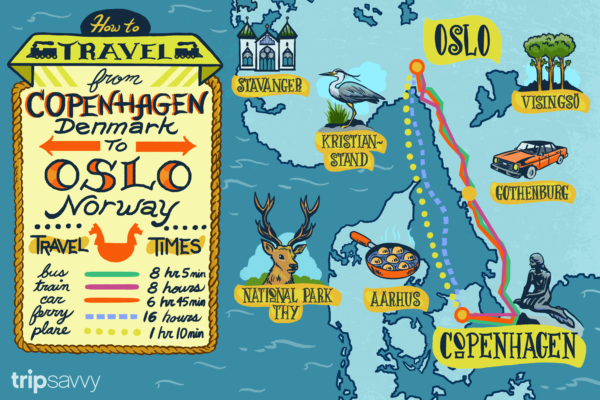
[Map by Ellen Linder from tripsavvy.]
In the morning, I happened to sit at a table adjacent to another young Australian woman named Natasha. We sat in silence for awhile but began chatting after she asked me to watch her bag while she got a bit more from the buffet refilled her coffee. Naturally, given a chance to chat, I’ll take it.
It turned out that she’s a writer who has a book of fantasy fiction about to be published and is traveling through Scandinavia doing research for her next novel – a piece of historical fiction. We had a lovely chat and, after I gave her my card and this website’s address, went our separate ways. (I hoped she’d visit the site and she did.)
We arrived in Oslo (Norwegian’s say us-lu. The vowel sounds are approximately halfway between the American English’s ‘boot’ and ‘but’) and began our bus tour of that city immediately after disembarking from the ferry.
Oslo is the oldest capital in Scandinavia and currently about one eighth of Norway’s population of 5,200,000 people live in the capital city. King Haakon V ruled from Bergen – a spot I’ll visit in a few days – but he moved the capital to Oslo early in the 14th century hoping to limit the Hanseatic League’s influence on his court.
The city has been periodically destroyed by fire. One razed the capital in 1624. In the late 14th century, Norway had formed a political union with Denmark and it was a Danish King, Christian IV, who ruled at the time of that fire.
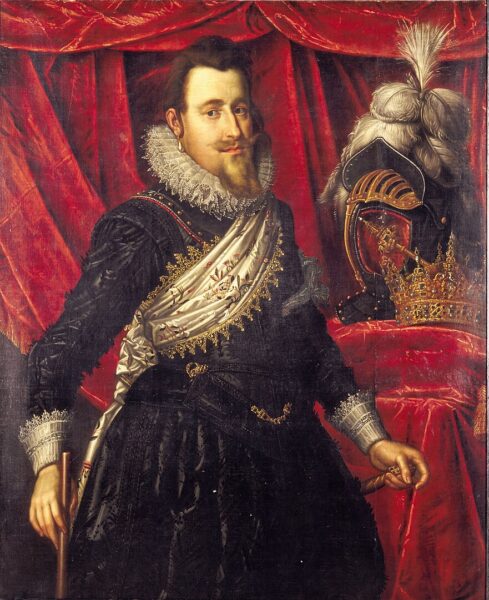
[Portrait of Christian IV by Pieter Isaacsz – from Wikipedia – Public Domain.]
He ordered the city rebuilt in stone rather than wood and the expense forced many who had once dwelt within the city to live outside it where they could still build their homes from wood. Christian was so pleased with his effort that he renamed the city Christiania. The original name, Oslo, that some say originates from the Norwegian for “meadow of the gods” but could also mean “meadow beneath the ridge,” was restored in 1925. I think the prosaic meaning is more likely.
Although we made a quick photo op stop at the beautiful Opera House, our first true stop was the Holmenkollbakkenen ski jump. Holmenkollen sits on a hill above the city and hosted its first festival in 1892. The ski jump has been rebuilt 19 times – most recently around 2010. It’s the only hill in the world with a permanent wind screen built as part of the designed construction, and it’s the only steel jump in the world. The hill is 375 meters above sea level and the jump is 134 meters long.
While I walked around a bit, time and the weather proved to be an impediment to really exploring the park. Most of the folks (though not all) used it as a bathroom break. Others, like Frank and Heidi jumped in the simulator and got a feel for downhill skiing at 130 km/h and jumping at 120 km/h.
The next stop was Frogner Park often called Vigeland Park. Gustav Vigeland had complete control over the design and installation of the section of the park for which it has gained worldwide fame. Vigeland designed, sculpted, or cast not only the statues but the bridges, fountains, and gardens in that section of the park. His installation is the largest of its kind by a single artist.
That alone makes the work impressive and our guide spoke rather effusively about the installation though I found it vaguely (perhaps Vigely) unsettling. You see, while the artist generously donated all his works including sculptures, drawings, and models to the city of Oslo in exchange for a place where he could live and work, she neglected to mention Vigeland’s darker side.
Creatively, the 212 bronze and granite sculptures in the Vigeland installation are generally considered to represent Nazi or Fascist aesthetics. Vigeland left little doubt that he was a Nazi sympathizer and, under the collaborationist, Vidkun Quisling, readily invited prominent Nazis to his studio. Perhaps fortunately, the rain pelted us rather unrelentingly and the tour of the installation was mercifully briefer than it would have otherwise been. The monolith, with its 121 figures, is the most well-known single piece.
As the rain abated, I found our next stop cleansing. We entered the section of Oslo’s City Hall that’s open to the public as a museum. The cleansing came upon our entry into the Grand Hall where each year’s Nobel Peace Prize is awarded.
All of Nobel’s Prizes but one are awarded in Stockholm, the city of his birth. The lone lamb is the Peace Prize. Nobel himself insisted that this prize have its award ceremony in Oslo though no one is certain why.
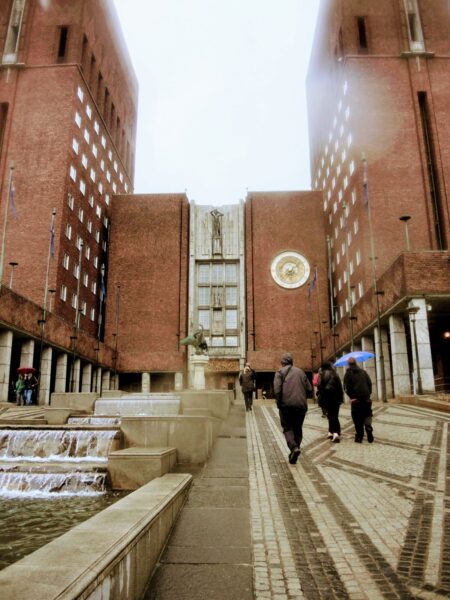
It was about 14:00 and, with the tour ended, we now had a free afternoon in Oslo on our hands. My plan was to find and have some lunch at the Crowbar and Bryggeri – nattyboandoldbay’s favorite place in Oslo. (Nattyboandoldbay is a member of the great Testudo Times community who reached out to me and made some suggestions for this trip.) It was only a few minutes walk from my hotel but didn’t open until 15:00 and I didn’t want to wait the 20 minutes or so.
I continued walking and found another kebab place and jumped right on it for a quick lunch. I was a bit unsure of where I was and I didn’t find the hotel provided map especially helpful. I showed it to the proprietor of the shop and pointed to the Botanical Gardens asking if I should turn right or left out of his shop.
People who have read these journals in the past know that I have a penchant for taking photos of interestingly translated signs. Since most Scandinavians speak English I expected those opportunities would be rare. However, the largest group of people living in Scandinavia likely to speak the least English is recent immigrants. This includes owners of kebab shops. He told me to turn left. Left was wrong. Right was right.
I walked much farther than I should have, took out the map and turned the wrong way again. There are two objects in this story – one animate and one inanimate – and one of them was incorrectly oriented. In this instance, the animate object (me) decided to turn the inanimate object (the map) and hold it in what seemed to be the counter direction. It worked. After an hour or so of fruitless wandering, I stumbled upon the Munch Museum and the Botanical Gardens.
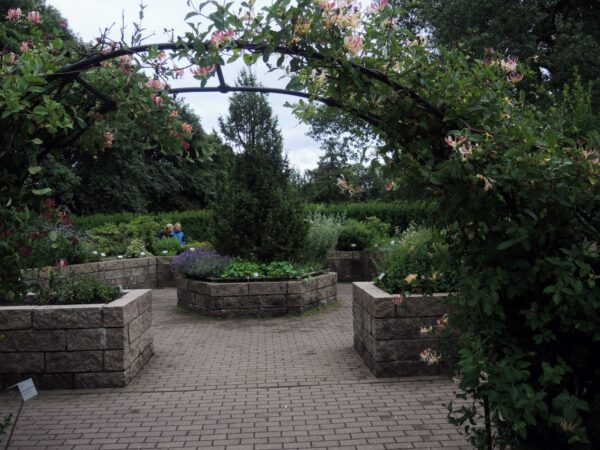
The exhibition at the Munch Museum was called Munch / Van Gogh. While the two artists never met and the Dutch painter was about a decade older, their evolution as artists was remarkably similar as evidenced by the juxtaposed self portraits at the entrance to the exhibition – granted only after passing through security that nearly rivals any airport.
Two of Munch’s principal influences were Hans Heyerdahl and Christian Krohg. For Van Gogh, the analogous figures were Jean Francois Millet and Jozef Israëls and some of their works were also displayed. Each of the two artists evolved from the use of monochromatic palates early in their careers (think of Van Gogh’s The Potato Eaters)
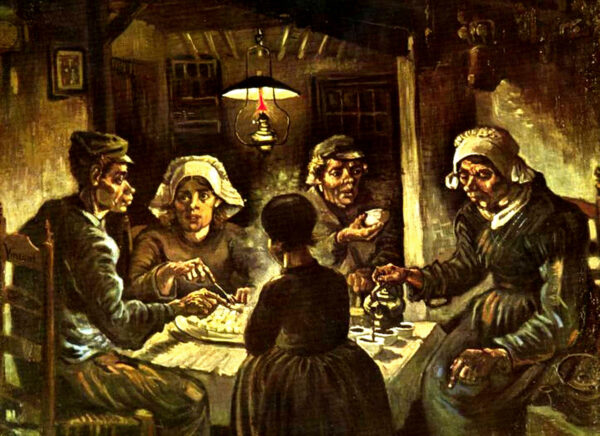
[The Potato Eaters from The Van Gogh Gallery.]
through a period of influence by Japanese Ukiyo-e woodcuts to more vibrant colors.
For both, writing played a profound role in the creative process. One crucial difference is Munch’s drive to display his art despite it being called “vulgar and unfinished. ” Van Gogh was considerably more reluctant to display his work.
If you’re wondering, one version of The Scream was included in the exhibition which concluded with Van Gogh’s Starry Night on the Rhine (not the more famous one) and Munch’s version of a Starry Night.
From there, I walked across the street back to the Botanical Gardens. For me, the highlights of this visit were the five willow sculptures by British artist Tom Hare
and the Viking Garden.
I’d planned to visit Vår Frelsers gravlund to see the graves of Munch and Henrik Ibsen but it’s on the opposite side of the city and although I believed I’d found a practical way to use the map, I remained uncertain I’d find it easily. With the day growing late and hoping to avoid another dramatic dinner entrance, I decided the prudent choice was to go directly to the hotel.
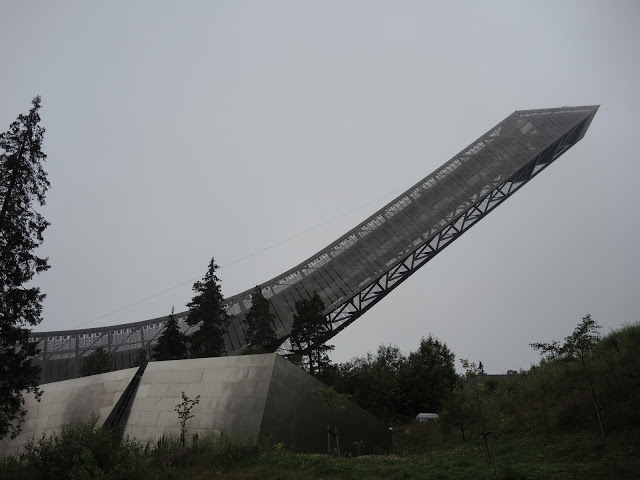

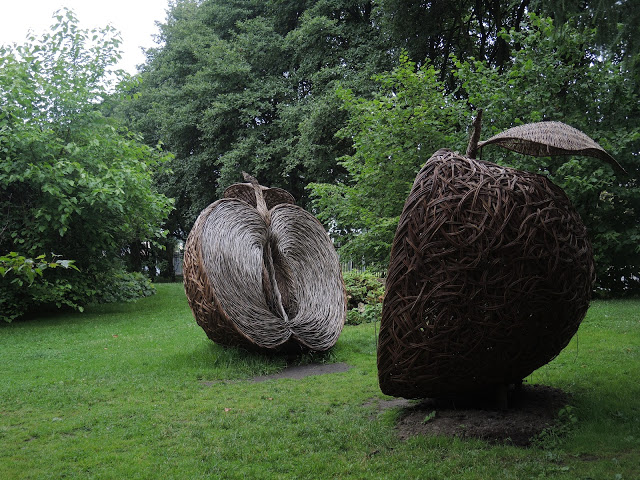
Thank you for your posts Todd. Entertaining, informative, and with that inimitable Gruncle Odd flair. Safe travels.
Same to you. I’ll be home in about 36 hours from the time I post this response.
Well well! What a history lesson. I have spent much time enjoying your experiences
With much more to come.
Love the willow sculptures! And the Vigeland pieces are both fascinating and repulsive. The phrase “Vigeland installation were generally considered to represent Nazi or Fascist aesthetics.” made me pause. There is a distinctive aesthetic to the Nazi art pieces. I’ll have to do a bit more net cruising on this. I so messed up your schedule. I had on my calander that you would be back last Sunday (wrong week, eh?)